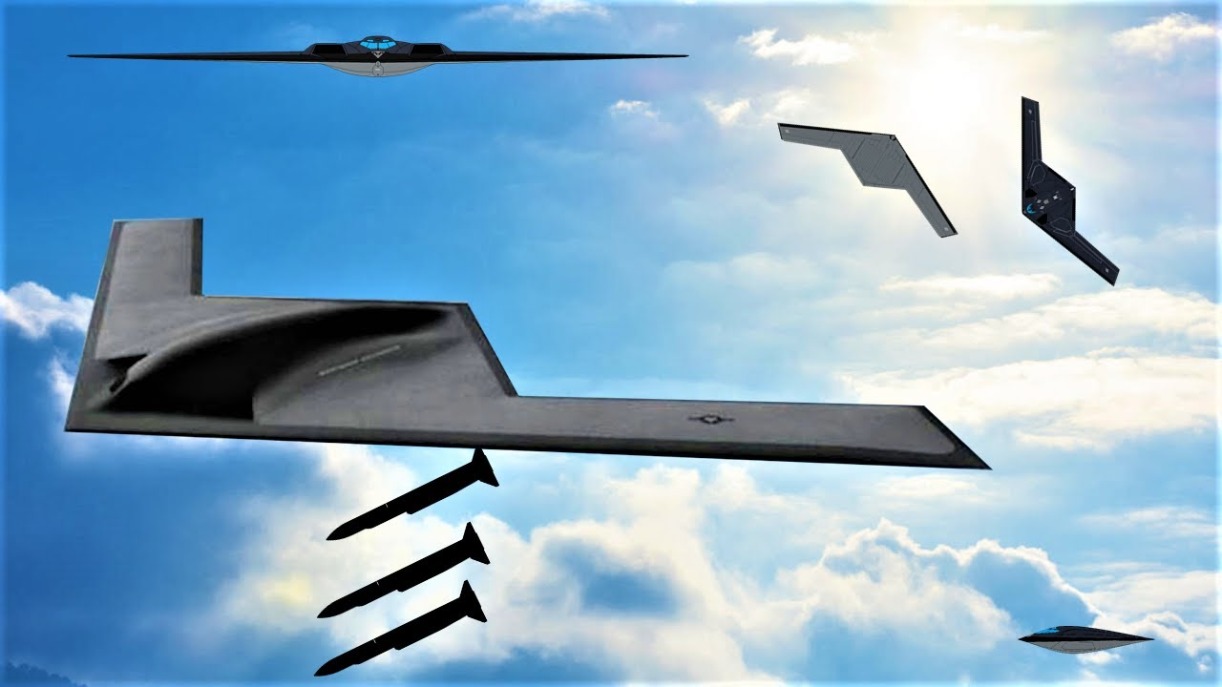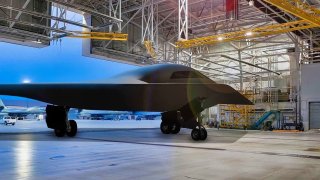The B-21 Raider Has 1 Big Question That Needs to Be Answered
The U.S. Air Force plans to procure around 100 B-21 Raider stealth bombers, with delivery expected to extend into the mid-2030s. Air Force Chief of Staff Gen. David W. Allvin cited potential future technological advancements as a reason for not committing to more than 100 units.
Summary and What You Need to Know: The U.S. Air Force plans to procure around 100 B-21 Raider stealth bombers, with delivery expected to extend into the mid-2030s. Air Force Chief of Staff Gen. David W. Allvin cited potential future technological advancements as a reason for not committing to more than 100 units.
-The production rate is deliberately slow, with fewer than 10 B-21s expected to be built annually, to safeguard the program from budget cuts.
-Despite being the future backbone of the U.S. bomber fleet, the B-21 faces risks similar to other high-cost military programs, which have historically seen production numbers slashed.
Question: How many B-21s will the US Air Force need?
The U.S. Air Force (USAF) has stated that they do not intend to buy more than 100 B-21s. The reason: building so many B-21s takes time. And by the time so many B-21s are built, the USAF may well have a better, more advanced option to buy.
As Air Force Chief of Staff Gen. David W. Allvin explained in April, the B-21 “is the future of our bomber force,” but better technology may be available in the near future, making the USAF reluctant to commit to procuring more than 100 B-21s.
Allvin suggested the USAF would reach 100 B-21s sometime in the mid-2030s, perhaps later. “I think there are other technological advancements that we would see to be able to augment that and have better mix…before we commit to that as being the platform…beyond that.”
B-21 Raider: The bomber of the future
Originally, the USAF was expected to procure between 80 and 100 B-21s.
That number was then upgraded to “at least 100.”
At one point, some pundits recommended that the USAF procure as many as 250 B-21s, to supplement retirements of the B-1 and B-2 bomber fleets.
Obviously, the 250 projection was overblown; Allvin’s 100-airframe cap is the new expectation.
If the USAF doesn’t produce 100 or so B-21s until the mid-2030s, that would mean the airframe is produced at a relatively languid pace—less than 10 per year.
As Air and Space Forces Magazine reported, “Pentagon acquisition and sustainment chief William LaPlante recently said that the B-21’s production rate was deliberately set at a low level to protect it from budget cuts.”
“One of the key attributes of this program,” LaPlante said through a spokesperson, “has been designing for production from the start – and at scale – to provide a credible deterrent … if you don’t produce and field to warfighters at scale, the capability doesn’t really matter.”
Subject to change
Procurement projections tend to change. Especially when the procurement relates to a system as advanced and expensive as the B-21 Raider.

Consider the F-22 Raptor, which was ultimately procured in far fewer numbers than originally projected.
The B-2 Spirit, the stealth bomber that the B-21 is being produced to replace, suffered similarly; less than two dozen B-2s ever joined the Air Force fleet.
Airframes are hardly the only system to have their budget and production cut.
The Seawolf class submarine was canceled after just three vessels were completed.
The Zumwalt class destroyer was cancelled after just three of the 32 planned vessels were completed. The narrative arc is routine.
And the B-21 is still early enough in its production life where it is vulnerable to suffering a similar fate – especially if the Air Force only intends to build the B-21 at a rate of ten or so airframes per year.
B-21 Pressure Cooker
The B-21 may have added pressure, however, relative to other programs that were canned mid-way through production.
The B-21 is expected to be a lynchpin of the US bomber fleet moving forward. Existing airframes are being retired just to make way for the B-21, so failing to supply it would lead to a shortage relative to current bomber numbers.
About the Author: Harrison Kass
Harrison Kass is a defense and national security writer with over 1,000 total pieces on issues involving global affairs. An attorney, pilot, guitarist, and minor pro hockey player, Harrison joined the US Air Force as a Pilot Trainee but was medically discharged. Harrison holds a BA from Lake Forest College, a JD from the University of Oregon, and an MA from New York University. Harrison listens to Dokken.
All images are Creative Commons and/or Shutterstock.


